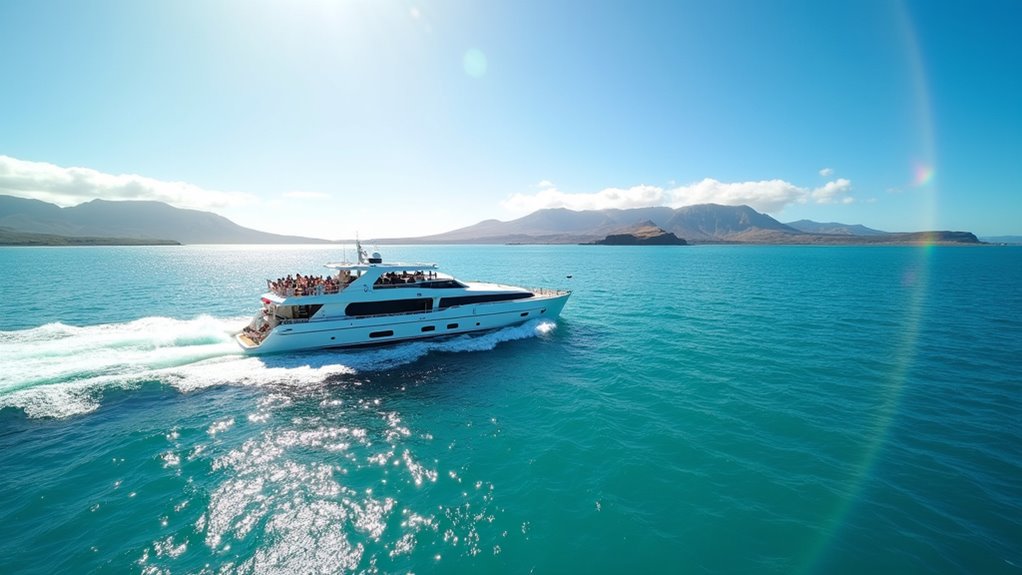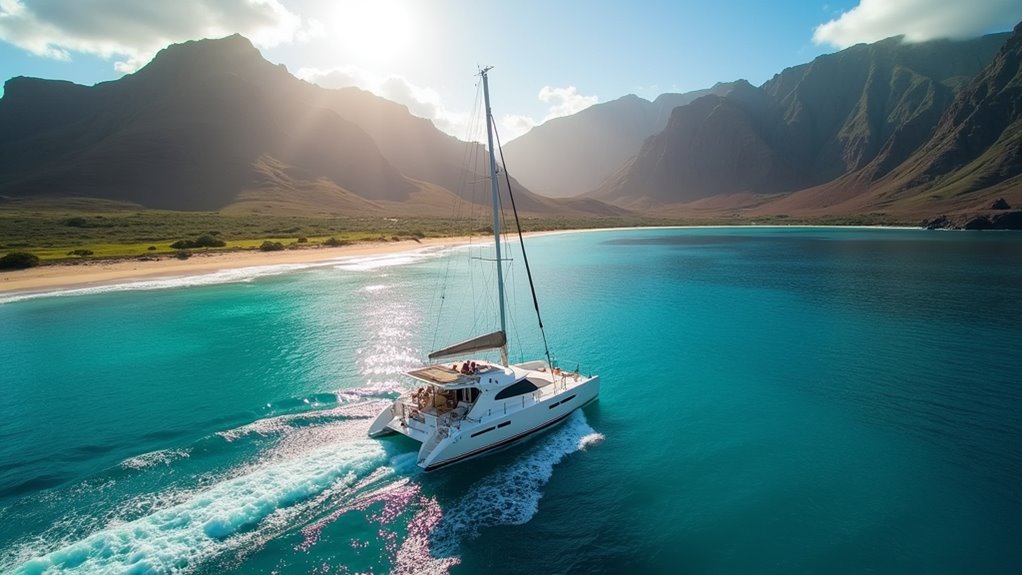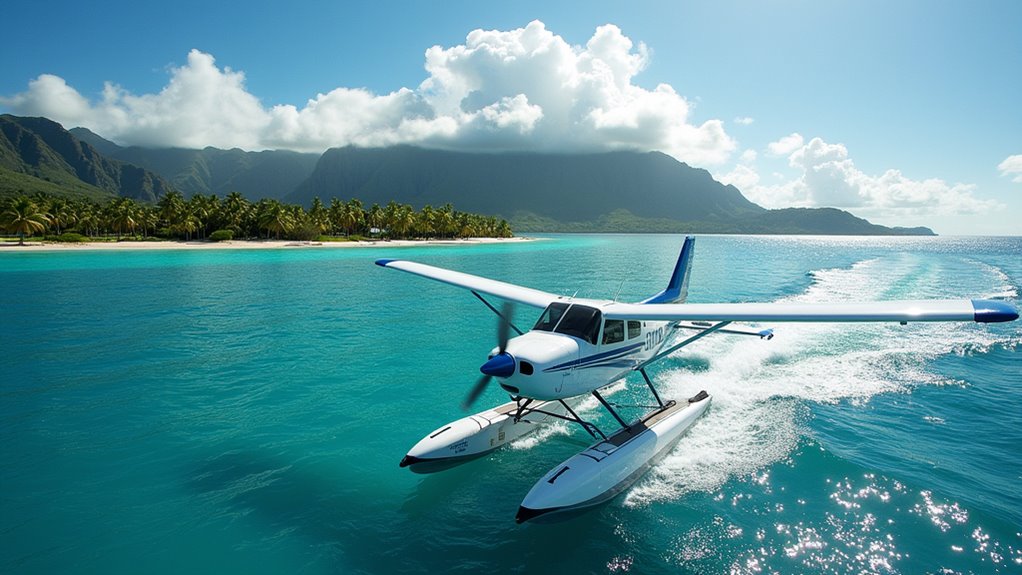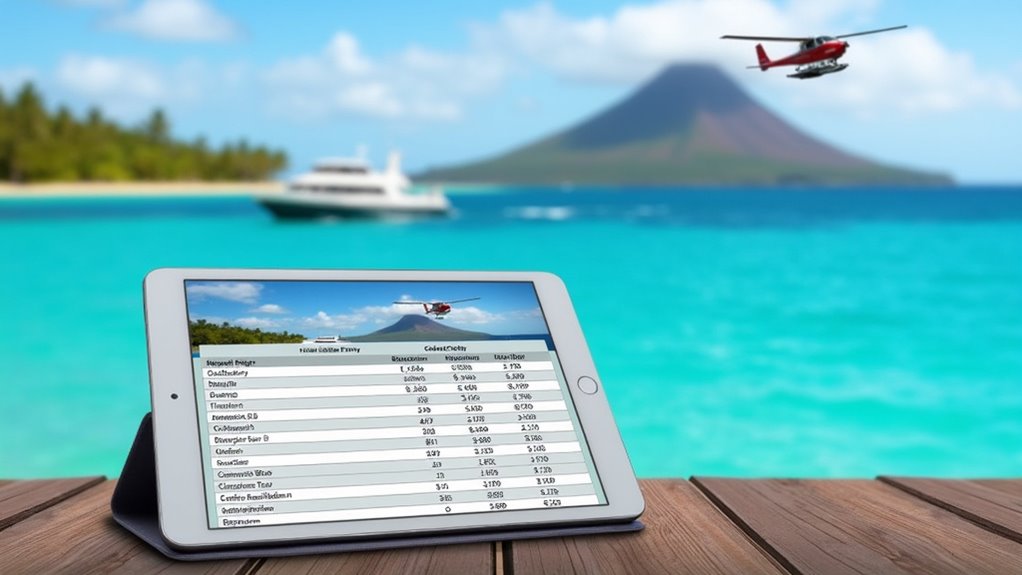Physical Address
304 North Cardinal St.
Dorchester Center, MA 02124
Physical Address
304 North Cardinal St.
Dorchester Center, MA 02124

Traveling between Hawaiian islands involves strategic choices beyond obvious flights, with secret options that could transform your island-hopping adventure.
Island hopping in Hawaii is primarily done via commercial airlines like Hawaiian or Southwest, with flights taking 20-40 minutes between major islands. Book directly with airlines for best fares ($50-$300 roundtrip) and schedule 4-5 days per island to maximize your experience. Alternative options include smaller carriers like Mokulele for remote islands, the Pride of America cruise, or the Maui-Lanai ferry. The following guide unpacks everything you need for seamless Hawaiian island adventures.

Although many visitors picture Hawaii as a single vacation destination, this Pacific paradise actually consists of an archipelago spanning 1,500 miles with 137 islands, islets, and atolls. Only eight of these are considered major islands, separated by wide channels that make interisland travel necessary for experiencing Hawaii’s diversity.
The most populated island is Oahu, home to Honolulu and Waikiki. Meanwhile, Hawaii Island (the Big Island) is the largest by far at 4,028 square miles. Each island offers distinctly different experiences – from Kauai’s lush landscapes to Maui’s diverse terrain and the Big Island‘s active volcanoes.
You’ll encounter varied microclimates as you island-hop, with wetter conditions on windward sides and drier, sunnier weather on leeward coasts. These islands were formed through volcanic activity over millions of years, with the southeastern Big Island being the youngest at approximately 0.4 million years old. Locals appreciate travelers who learn basic Hawaiian phrases before island-hopping, as this shows respect for the rich cultural heritage of the islands.
When planning to explore multiple Hawaiian islands, commercial flights serve as the backbone of interisland transportation. Three main carriers dominate these routes: Hawaiian Airlines (the largest with 170 daily flights), Southwest Airlines, and Mokulele Airlines.
Island hopping in Hawaii means choosing from Hawaiian, Southwest, or Mokulele – with Hawaiian Airlines leading the pack.
You’ll find frequent flights connecting all major islands through key airports: Honolulu (HNL), Kahului (OGG), Lihue (LIH), Kona (KOA), and Hilo (ITO). Most journeys take just 20-40 minutes, with departures scheduled from early morning to late evening.
For the best fares, book directly with airlines in advance. Southwest often offers competitive pricing for budget travelers. Island hopping tours are another option for travelers who prefer a more structured experience. Remember to factor in baggage fees when calculating costs. Most flights operate as commuter-style flights with efficient boarding procedures and smaller aircraft.
The speed, reliability, and frequency of these flights make them the most practical choice for efficient island hopping.

Beyond the major airlines, Hawaii offers several specialized options for interisland travel that cater to unique needs and destinations.
Mokulele Airlines operates small turbo-prop planes between main and smaller Hawaiian airports, including Molokai and Lanai which larger carriers often don’t serve. Be prepared for their specific carry-on restrictions and weight requirements at booking.
For more personalized experiences, private charters provide flexibility in scheduling and access to remote areas not covered by commercial flights. While more expensive, they offer exclusivity for special occasions.
Hawaii has an advantage over many tropical destinations since there are no wild snakes on the islands except for a few introduced species. Smaller carriers provide benefits like personalized service and unique island-hopping adventures, but come with challenges including limited capacity, strict weight restrictions, and greater sensitivity to weather conditions. Fares generally range from $50 to $100 depending on when you book your flight.
When planning your island-hopping adventure, weigh these pros and cons against your specific travel needs.
For travelers who prefer to avoid the hassle of multiple flights between islands, cruise ships offer a compelling alternative for exploring Hawaii. The Norwegian Cruise Line’s Pride of America provides an 8-day journey visiting Oʻahu, Maui, Hawaiʻi (Big Island), and Kauaʻi without ever needing to repack your bags.
This option eliminates inter-island flights and hotel changes while maximizing your island exploration time. During your cruise, you may spot some of Hawaii’s fascinating marine life, including tiger sharks which are among the nine key shark species found in Hawaiian waters. Passengers can enjoy spectacular views of the famous Nāpali Coast during the cruise’s return journey from Kauaʻi to Oʻahu.

While cruise ships offer a luxurious way to visit multiple Hawaiian islands, they represent just one chapter in Hawaii’s fascinating inter-island transportation story. From the 1880s until the 1950s, steamships were Hawaii’s lifeline, with the Inter-Island Steam Navigation Company connecting communities across the archipelago.
Today, your ferry options are limited to the Expeditions Ferry between Maui and Lanai—the only remaining passenger ferry service. The ambitious Hawaii Superferry (2003-2009) attempted to revolutionize inter-island travel with high-speed catamarans but ultimately closed due to legal challenges and environmental concerns. The Alakai vessel could transport up to 866 passengers and 282 vehicles on each journey, showcasing the potential scale of inter-island ferry service.
Though air travel dominates inter-island transportation for its speed and efficiency, there’s ongoing interest in reviving ferry services with eco-friendly technologies that could provide more affordable travel alternatives while addressing previous environmental and community concerns. Travelers should note that while Hawaii’s natural beauty attracts visitors, the state also has wild animals that require caution, though these pose considerably less risk than transportation safety concerns.
Planning a Hawaiian adventure that spans multiple islands requires thoughtful preparation to maximize your experience while minimizing travel stress. Most experts recommend spending at least 4-5 days per island, with extra time allocated for travel days. Book flights and rental cars well in advance, especially during peak seasons when availability becomes limited. For budget-conscious travelers, flying mid-week can result in significantly lower airfares between islands. While Hawaii offers a different experience than Canada, you can enjoy the same level of travel safety throughout the island chain.
Island-hopping in Hawaii demands strategic planning—allow 4-5 days per island and book transportation early to avoid disappointment.
Remember that airport transfers, check-in processes, and potential delays will consume part of your day when island-hopping, so adjust your itinerary expectations accordingly.

Traveling between Hawaiian islands comes with varying costs that can substantially impact your overall vacation budget. Inter-island flights remain the primary option, with roundtrip fares potentially reaching $300 as competition diminishes.
Southwest typically offers lower prices than Hawaiian Airlines on routes like Lihue to Kona ($120 vs. $160).
For budget travelers, plan ahead and book during off-peak seasons when prices drop markedly. While private charters and cruises exist, they’re generally premium options rather than cost-effective alternatives. The days of $49 fare wars are becoming rare, so consider your timing carefully. Interisland price trends show fares have increased from $39 to about $60 since early 2024.
Remember that total costs extend beyond airfare—Oahu offers cheaper accommodations than other islands, and transportation expenses vary widely. Combining flights with accommodation packages can help maximize your savings across multiple islands. Just as with Puerto Rico, maintaining travel safety awareness is important when island hopping in Hawaii, especially when visiting remote areas.
Exploring Hawaii’s islands isn’t just about getting from point A to point B—it’s part of your adventure. You’ll find commercial flights are efficient but pricey, while cruise options offer luxury at the cost of flexibility. Plan your island-hopping carefully, balance your budget against convenience, and remember that sometimes the journey between paradise spots becomes a highlight itself. Each method has trade-offs, but all lead to unforgettable Hawaiian experiences.